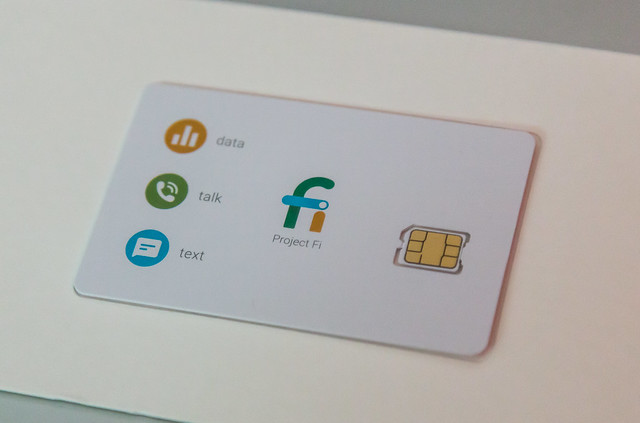Difference Between Google Fi and Sprint
The data volume in fixed and mobile networks has increased dramatically over the past few years. The new cloud-based services or mobile video streaming as well as new business models contribute significantly to an increasing amount of traffic. Another factor that pushes traffic growth is the user online behavior. There is a growing number of personal, connected devices and the increasing use of smartphones that have a direct impact on network operators in particular. To efficiently handle the growing and the more volatile traffic quantities and demands, companies are now relying on new innovative access technologies such as the MVNO or mobile virtual network operator.
MVNO is more like a business model that offers mobile telephony services without holding a spectrum license and having an access network. Google has launched the Google Fi service for end customer in the United States as an MVNO, banking on the networks of the network operators as well as on public hotspots to gain access. As an MVNO, Google is moving to build its own physical mobile network but this move makes Google a direct competitor to common telecommunication companies like Sprint, which already have a stronghold in the United States. Let’s see how the search giant performs when put up against the fourth largest wireless carrier in the United States.
So What is Google Fi?
Google Fi is an alternate wireless carrier operated and managed by Google. Google has launched the Google Fi service banking on the networks of the network operators as well as on public hotspots to offer wireless services and seamless access across networks and devices. The primary interest is to link with one another of Google devices, the most widespread mobile operating system, the Google services portfolio, and the created Google connectivity. The Google Fi network makes use of LTE networks in the United States, but also take advantage of the open Wi-Fi hotspots to allow telephony services and data transfers. It is a new business model that effectively combines the mobile network leveraging the networks of Sprint, T-Mobile and US Cellular, allowing efficient and easy switching between networks while also using Wi-Fi to provide uninterrupted access across various networks.
What is Sprint?
Sprint is one of the major network carriers operating in the United States based out of Overland Park, Kansas. Sprint Corporation started as the Brown Telephone Company in Abilene, Kansas in 1899 and founded by Cleyson Brown. After decades of hard work and expansion, the diversified $1 billion United Telephone system served over 3.5 million local telephone lines coast-to-coast in 1976. In 1984, Sprint announced plans to setup the first nationwide 100 percent digital, fiber-optic network. In 1986, the long distance service was officially launched under the brand name Sprint. In 1988, Sprint became the first long distance carrier to install Signaling System 7 throughout its network. Following its merger with Centel Corporation in 1993, Sprint became the only major U.S. telecommunication company to provide long distance, local and wireless services. Today, Sprint is the fourth largest wireless service provider in the U.S.
Difference between Google Fi and Sprint
Coverage
– The Google Fi network makes use of LTE networks in the United States, but also take advantage of the open Wi-Fi hotspots to allow telephony services and data transfers. It effectively combines the mobile network leveraging the networks of Sprint, T-Mobile and US Cellular to provide seamless connection across various networks and devices. Domestic coverage is good considering it makes use of the three major U.S. network operators. Sprint, on the other hand, relies on its own network infrastructure to build a nationwide LTE network in the United States which accounts for a seamless network coverage. Google Fi leases the services from operators like Sprint.
Pricing
– Google Fi plans are as simple as they can be. For just $20 a month, you get unlimited calling and messages, including unlimited international text messages and access to coverage in 200+ countries and destinations. When it comes to data, Google Fi offers data at a flat rate of $10 per 1 GB of data usage until 6 GB, even when roaming internationally. In addition, you can add up to 5 people to your plan for $15 per month per person. Sprint is all about the unlimited plans, which starts at $60 per month which will get you unlimited talk, text and 5 GB of 4G LTE data while roaming in Canada and Mexico, plus 500 MB of mobile hotspot at LTE speeds.
Features
– Google Fi has a special feature called Bill Protection that offers a way to save money on your monthly bill. According to this, you only pay for what you use, which is capped at $10 per 1 GB of data you use until you reach your data limit, which depends on the number of people on your current plan. This allows you to cap your monthly bill at $60 per month, regardless of whether you use 6 GB or 60 GB of data. Sprint also offers a comprehensive set of features to cater to a wide customer base, including the Unlimited Freedom Plan which will get you unlimited service in the U.S. for $60 a month.
Google Fi vs. Sprint: Comparison Chart
Summary of Google Fi vs. Sprint
Google Fi Bill Protection plan appeals to international travelers which allow them to draw from their regular pool of data in 200+ countries and destinations without having to pay any additional roaming charges. On the contrary, Sprint also allows unlimited data in over 200 countries, but it strictly limits the speed. With Google Fi, you only pay for what you use and what you don’t use, gets credited back to your monthly bill. This definitely gives Google Fi an upper hand over Sprint. However, Sprint offers some pretty aggressive plans too, plus a lot of extra features to get going.
- Difference Between Caucus and Primary - June 18, 2024
- Difference Between PPO and POS - May 30, 2024
- Difference Between RFID and NFC - May 28, 2024
Search DifferenceBetween.net :
Leave a Response
References :
[0]Image credit: https://upload.wikimedia.org/wikipedia/commons/thumb/1/13/Logo_of_Sprint_Nextel.svg/500px-Logo_of_Sprint_Nextel.svg.png
[1]Image credit: https://www.flickr.com/photos/diversey/25109932164
[2]Krüssel, Peter. Future Telco: Successful Positioning of Network Operators in the Digital Age. Berlin, Germany: Springer, 2018. Print
[3]Thouvenin, Florent, et al. Remembering and Forgetting in the Digital Age. Berlin, Germany: Springer, 2018. Print
[4]Smyrnaios, Nikos. Internet Oligopoly: The Corporate Takeover of Our Digital World. Bingley, United Kingdom: Emerald Group Publishing, 2018. Print



